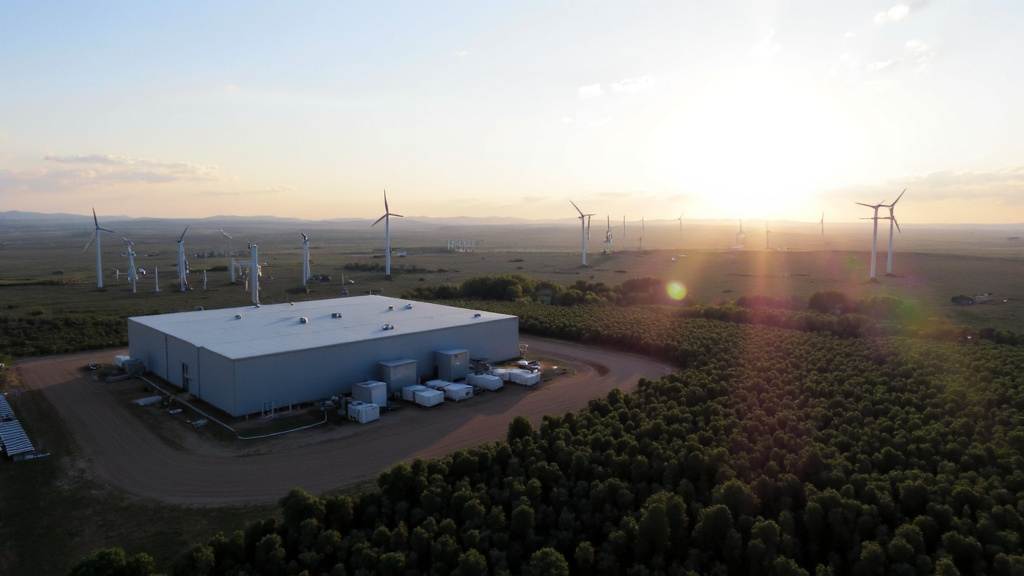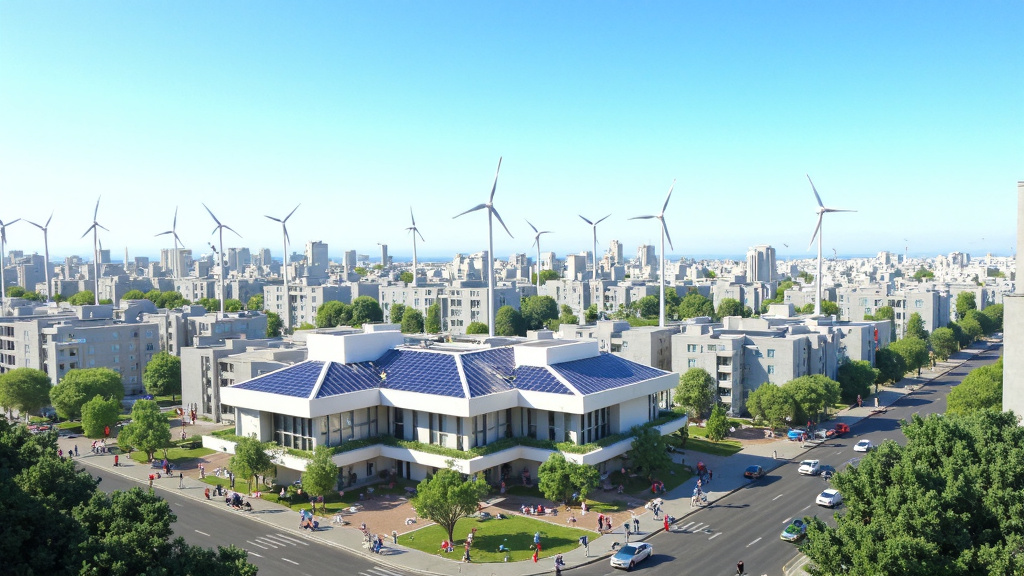5901 Botham Jean Blvd, Dallas, TX 75215
What is the Role of Sustainable Magnet Technology in Renewable Energy?
May 1, 2025Sustainable magnet technology involves developing and applying magnetic materials that power clean energy systems with minimal environmental impact. These specialized magnets are crucial for numerous renewable energy technologies, enabling efficient conversion of natural forces into usable electricity.
Magnets are essential in renewable energy generation. They convert mechanical movement from wind, water, and other sources into electrical power through electromagnetic induction. This process is central to most clean energy systems.
The importance of sustainable magnet technology goes beyond basic functionality.
Advanced magnetic materials enhance energy system efficiency, increase reliability, and lower maintenance costs across various renewable applications. Their performance capabilities directly affect our ability to expand clean energy production globally.
How Do Magnets Enhance Wind Turbine Efficiency?
![]()
Permanent magnet synchronous generators (PMSGs) have significantly improved wind turbine technology by enhancing efficiency and reliability. These advanced generators use powerful rare-earth magnets instead of traditional electromagnetic systems to create the magnetic fields essential for electricity generation.
The primary advantage of PMSGs is their ability to operate without external power sources. Unlike conventional induction generators that require electricity to create their magnetic fields through electromagnets, PMSGs generate magnetic fields naturally through permanent magnets. This elimination of external power requirements results in higher overall efficiency, with some modern PMSGs achieving efficiency ratings above 93%.
Wind farms benefit greatly from this technology because PMSGs can operate at variable speeds. Traditional generators typically require consistent wind speeds to maintain optimal performance. In contrast, magnetic generators perform efficiently even in fluctuating wind conditions, which is crucial for maximizing energy capture in real-world environments where wind speeds constantly change.
Another substantial benefit is the simplified mechanical design. PMSGs allow for direct-drive configurations that eliminate the need for gearboxes. This reduction in mechanical components delivers multiple advantages:
- Decreased maintenance requirements and associated costs
- Reduced mechanical losses that typically occur in gearbox systems
- Lower overall weight in the turbine nacelle
- Improved reliability with fewer parts that could potentially fail
The elimination of gearboxes also means wind turbines can be constructed with lighter, less expensive towers while still maintaining structural integrity. This weight reduction creates a cascade of benefits throughout the entire wind turbine system, from manufacturing to installation and operation.
Wind turbines equipped with PMSGs can also start generating electricity at lower wind speeds. This expanded operational range allows wind farms to produce power during light wind conditions that would leave conventional turbines idle. The result is increased annual energy production (AEP) and improved cost-effectiveness of wind power installations.
The magnetic mounting solutions used in PMSG systems further enhance efficiency by securing equipment to tower walls without drilling holes or welding brackets. This innovation preserves the structural integrity of the tower while reducing construction time and eliminating potential points of mechanical failure.
| Feature | Traditional Generators | Permanent Magnet Synchronous Generators (PMSG) |
|---|---|---|
| Efficiency | Lower, due to rotor excitation losses | Higher, no rotor excitation losses |
| Maintenance | Higher, due to slip rings and brushes | Lower, no slip rings or brushes |
| Structure | Complex, with excitation windings | Simpler, no excitation windings |
| Weight | Heavier | Lighter, compact design |
| Operational Range | Requires consistent speeds | Efficient at variable speeds |
The adoption of PMSG technology represents a significant advancement in making wind energy more sustainable, reliable, and economically viable. With their superior performance in variable conditions, reduced maintenance requirements, and higher energy output, permanent magnet generators are helping drive the continued growth of wind power as a leading renewable energy source.
What Role Do Magnetic Bearings Play in Hydropower and Wave Energy?
Magnetic bearings revolutionize hydropower and wave energy systems by eliminating mechanical contact between moving parts. This innovation addresses a major challenge: mechanical wear in harsh environments.
In traditional hydropower turbines, conventional bearings face constant friction and stress. Magnetic bearings create a contactless environment where components float on magnetic fields, eliminating friction-based energy losses and preventing deterioration common in conventional systems.
The benefits extend beyond reducing wear. Maintenance needs drop significantly, allowing hydropower facilities to operate longer without shutdowns, while wave energy converters withstand corrosive saltwater with fewer replacements.
Energy production consistency—a critical factor for grid stability—improves with magnetic bearings. Conventional bearings wear down, causing vibrations and inefficiencies. Magnetic systems maintain optimal positioning of rotating components, ensuring stable energy generation even with variable water flow.
The efficiency gains are substantial. In hydropower, the elimination of friction means more water kinetic energy converts directly to electrical output. Studies show systems with magnetic bearings achieve higher efficiency rates, with nearly all shaft energy used in the process.
Wave energy systems particularly benefit. The harsh marine environment quickly damages conventional bearings. Magnetic systems isolate components from these elements, extending operational life while maintaining consistent energy conversion.
The technology also allows more flexible design options for both hydropower and wave energy systems. Without mechanical contact constraints, engineers can create more compact and efficient turbines and generators, enhancing renewable energy production capabilities.
Superconducting magnetic bearings represent the next evolution. These advanced systems support larger loads with less energy loss, ideal for high-capacity applications. As research progresses, they may become central to storing surplus energy from hydropower and wave systems in flywheel energy storage units.
The integration of magnetic bearings in these installations contributes to grid stability. By ensuring consistent output with fewer fluctuations, these systems help balance the variable nature of other renewable sources like wind and solar, resulting in a more reliable green energy mix that better meets baseload demands.
| Feature | Conventional Bearings | Magnetic Bearings |
|---|---|---|
| Friction | High, due to mechanical contact | Low, due to contactless environment |
| Maintenance | Frequent, due to wear and tear | Minimal, due to reduced wear |
| Efficiency | Lower, energy lost to friction | Higher, more energy converted to output |
| Operational Lifespan | Shorter, due to mechanical degradation | Longer, as components float on magnetic fields |
| Environmental Suitability | Limited, affected by harsh conditions | Better, suitable for harsh environments |
The economic case for magnetic bearings is clear when considering total lifecycle costs. Though initial installation may be more expensive, the reduced maintenance, longer lifespan, and improved energy efficiency typically result in significant long-term savings for operators.
How Does Magnetic Energy Storage Contribute to Renewable Energy Systems?

Magnetic energy storage systems support renewable energy integration effectively. Among the most promising technologies is Superconducting Magnetic Energy Storage (SMES), which stores energy within magnetic fields generated by direct current flowing through specially designed superconducting coils.
SMES systems operate on a simple principle: electricity passing through the superconducting coil creates a powerful magnetic field that stores energy. The superconducting material eliminates electrical resistance, allowing continuous current flow without energy loss, making SMES highly efficient for short-term energy storage.
SMES Components and Operation
A typical SMES system consists of several key components. The core is the superconducting coil, made of materials requiring extremely low temperatures. This necessitates a cryostat filled with liquid helium or nitrogen and a cryogenic refrigeration unit to maintain these temperatures.
The system also includes power conditioning equipment to convert alternating current from the grid to direct current for storage in the coil. When energy is needed, this process reverses, and the system quickly returns electricity to the grid.
SMES can respond to power demands in milliseconds, offering a significant advantage over other storage technologies. It charges and discharges rapidly without degradation, unlike chemical batteries that wear down with repeated use.
Enhancing Grid Stability with SMES
Renewable energy sources like wind and solar are intermittent, creating instability in power grids designed for consistent generation.
SMES systems help mitigate this issue by providing immediate power injection during sudden drops in renewable generation. When renewable output exceeds demand, SMES stores the excess energy instead of wasting it.
The technology excels at providing high power output for short durations, making it ideal for stabilizing voltage fluctuations and frequency regulation in grids with high renewable penetration. SMES systems enhance overall power quality while enabling greater integration of clean energy sources.
Unlike some storage technologies, SMES systems have high energy density, storing significant power in a compact space, making them suitable for areas with space constraints.
| Technology | Energy Density | Response Time | Environmental Impact |
| SMES | High | Milliseconds | Minimal |
| Flywheels | Medium | Fast | Moderate |
| Compressed Air | Low | Slow | Moderate |
| Pumped Hydro | Low | Slow | Moderate |
Environmental and Economic Considerations
From an environmental perspective, SMES offers advantages over chemical battery storage. The system contains no toxic materials and poses minimal environmental risks. The main components—superconducting wires and cooling systems—have long operational lifetimes with proper maintenance.
The economic case for SMES is improving. While initial investment is high due to superconducting materials and cooling systems costs, operating costs remain low. The technology requires minimal maintenance and experiences almost no degradation over time.
Recent advances in high-temperature superconductors promise to reduce cooling requirements, potentially cutting both the complexity and cost of SMES systems. As manufacturing scales up and material science advances, costs are expected to decrease further.
Future Prospects for SMES in Renewable Energy
Current research focuses on developing more efficient SMES systems. Scientists are working on new superconducting materials that can operate at higher temperatures, reducing cooling requirements and associated energy consumption.
Hybrid systems combining SMES with other storage technologies show particular promise. For example, pairing SMES with hydrogen generation creates a system that offers both short-duration power quality support and long-term energy storage, addressing multiple grid needs with a single installation.
As renewable energy grows worldwide, the demand for advanced storage solutions like SMES will increase. The technology’s unique capabilities make it a valuable tool in building more resilient and sustainable power systems. With continued development, SMES could become a standard component in renewable energy infrastructure.
Conclusion: The Future of Sustainable Magnet Technology in Renewable Energy

Sustainable magnet technology is crucial for advancing renewable energy as we transition to cleaner power. Throughout this article, we’ve explored how magnetic innovations enhance wind turbines through permanent magnet synchronous generators, boosting efficiency and reliability.
We’ve also seen how magnetic bearings reduce maintenance needs in hydro and wave energy systems, while magnetic storage technologies offer promising solutions for balancing intermittent renewable sources.
As research and investment in sustainable magnet technology grow, we can expect even more groundbreaking developments to transform our energy landscape. From reduced reliance on rare earth materials to more powerful and efficient magnetic components for electric vehicles, these innovations will be vital in creating a sustainable future.
For professional recycling solutions supporting the circular economy of these valuable materials, contact Okon Recycling at 214-717-4083.
